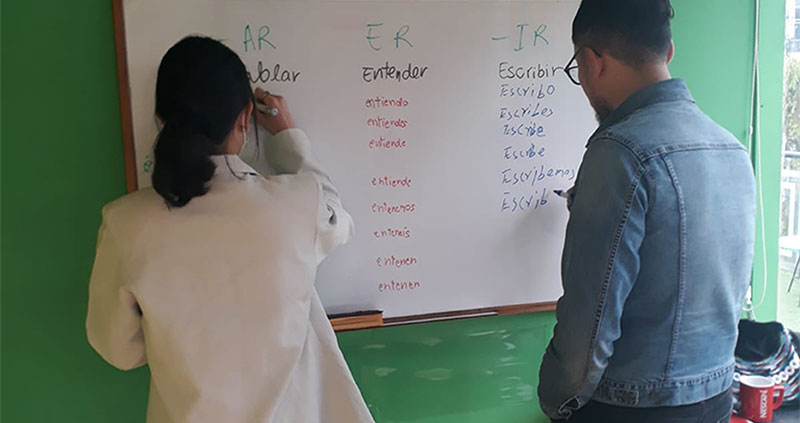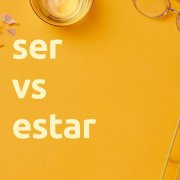How to use the verb “gustar” to express likes and dislikes
When we are learning a new language, one of the first things we should know is how to express our likes and dislikes.
We use this simple vocabulary whenever we visit new places, meet new people, or try foods.
Let’s begin!
Learning how to use the verb “gustar”
To express your likes and dislike, you need to learn first the verb “gustar” or to like in English.
This verb is somehow special. Its conjugation is not like the majority of verbs.
When conjugating the verb “gustar”, we don’t use personal pronouns (yo, tu, el, ella, nosotros, usted, ellos, ellas), instead, we use indirect object pronouns (me, te, nos, le.)
We use the verb “gustar” to:
- Express that we like or dislike an activity. In this case, we use the verb “gustar” with a verb in its infinitive form: Gustar + verb
- Express that we like or dislike an object, using the verb’s singular or plural form.
Verb “gustar” + other verbs
Let’s start with learning how to express our likes and dislikes of an activity.
There is a simple formula for this:
Some examples are:
| We say: | English Translation |
| Me gusta viajar | I like to travel |
| Te gusta pintar | You like to paint |
| Le gusta comer pizza | He/She likes eating pizza |
| Nos gusta escuchar música | We like listening to music |
| Les gusta cocinar juntos | You like cooking together |
| Les gusta bailar | They like to dance |
In addition to indirect object pronouns, we often accompany the phrases with a prepositional pronoun (a mi, a ti, a él, a ella, a ellos, a nosotros, a ustedes) usually to reinforce ideas, emphasize something, or separate the subject from others’ opinions or preferences.
What would that phrase be like if it included a prepositional pronoun?
| A mi me gusta viajar, pero a ella le gusta estar en casa | (I like to travel, but she likes to stay at home) |
| A ti te gusta pintar, ¿verdad? | (You like painting, don’t you?) |
| A él/ella le gusta comer pizza los domingos) | (she likes to eat pizza on Sundays) |
| A nosotros nos gusta escuchar música clásica, pero a ellos no les gusta | (We like listening to Classical music but they don’t like it) |
| (A ustedes) les gusta cocinar juntos? | (Do you like cooking together?) |
| (A ellos/ellas) les gusta bailar, ¡son latinos/latinas! | They like dancing; they are Latins! |
The negative form of the verb “gustar”
What do we say when we DON’T like something?
Expressing your dislike is super easy with this formula.
Let’s see how it looks with the same examples we used above:
| (Optional) | |
| (A mi) | NO me gusta viajar |
| (A ti) | NO te gusta pintar |
| (A el/ella) | NO le gusta comer pizza |
| (A nosotros) | NO nos gusta escuchar música |
| (A ustedes) | NO les gusta cocinar juntos |
| (A ellos/ellas) | NO les gusta bailar |
Asking questions with the verb “gustar”
If you ask someone what they like, you add the question mark and intonation at the end of the sentence.
| (Optional) | |
| (A mi) | ¿Me gusta viajar? |
| (A ti) | ¿Te gusta pintar? |
| (A el/ella) | ¿le gusta comer pizza? |
| (A nosotros) | ¿nos gusta escuchar música? |
| (A ustedes) | ¿les gusta cocinar juntos? |
| (A ellos/ellas) | ¿les gusta bailar? |
Verb “gustar” + objects
Section one explained that we use the verb “gustar” when we like an activity, which implies using a verb in its infinitive form. But how about when we like or don’t like things?
This is the case!
In this case, the verb slightly varies depending on whether the object we are referring to is singular or plural.
How is this?
When we refer to things, we know they could be singular or plural. Depending on this, the verb would be:
“Gusta”, referring to singular objects
“Gustan”, referring to plural objects
The use of the indirect object pronouns and preposition pronouns reminds the same.
Let’s see some examples:
| Me gusta el café | I like coffee |
| Me gustan las frutas | Me gustan las frutas I like fruits |
| ¿Te gusta el agua caliente o el agua fría? | Do you like hot water or cold water? |
| ¿Te gustan los perros o los gatos? | Do you like dogs or cats? |
| A ella le gusta ese vestido | She likes that dress |
| A ella le gustan esos zapatos | She likes those shoes |
| A nosotros nos gusta la playa | We like the beach |
| A nosotros nos gustan las montañas | We like mountains |
| ¿Les gusta esta casa? | Do you like this house? |
| ¿Les gustan estos apartamentos? | Do you like these apartments? |
| ¿A ellos les gusta el calor o el frío? | Do they like hot or cold weather? |
| ¿A ellos les gustan las flores o las plantas? | Do they like flowers or plants? |
Other ways to express likes and dislikes
As we have the love spectrum, we also have the likes & dislikes spectrum…
What is it?
By spectrum, we mean the different levels of likes and dislikes. When you like something, or when you love something!. And, when you don’t like something, and when you really hate something!
Like spectrum
| Me gusta el café | I like coffee |
| Me gusta mucho el café | I like coffee a lot |
| Me gusta muchísimo el café | I really like coffee |
| Me encanta el café | I love coffee |
| Amo el café | I really love coffee |
Dislike Spectrum
| No me gusta el café | I don’t like coffee |
| No me gusta mucho el café | I don’t really like coffee much |
| Odio el café | I hate coffee |
| Detesto el café | I really hate coffee |
We hope this article is helpful for you! If you want to learn more verbs and how to conjugate them in different tenses, come join our classes!
Don’t forget to follow our social media and read our bi-weekly blog to LEARN MORE THAN SPANISH.
We hope to see you soon!










